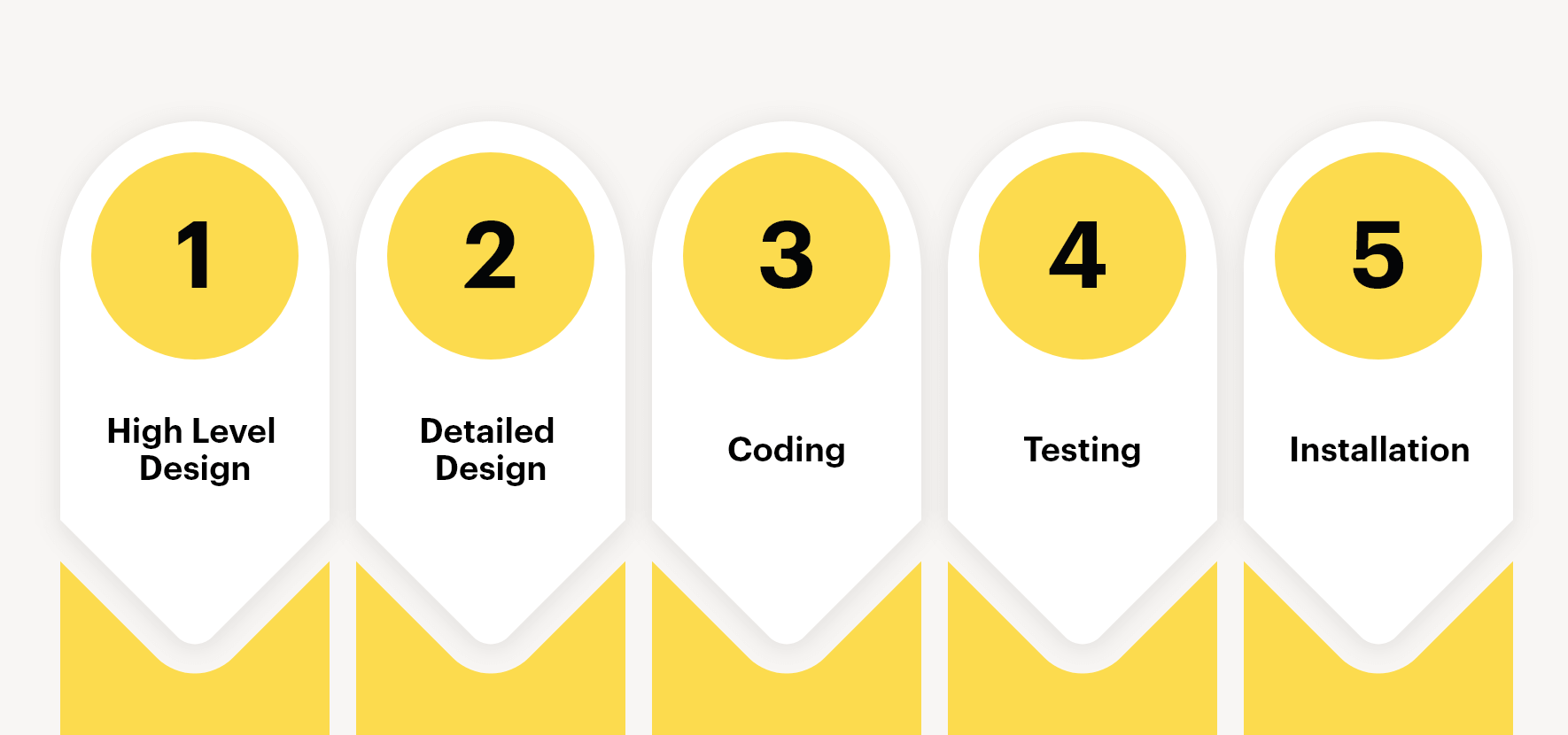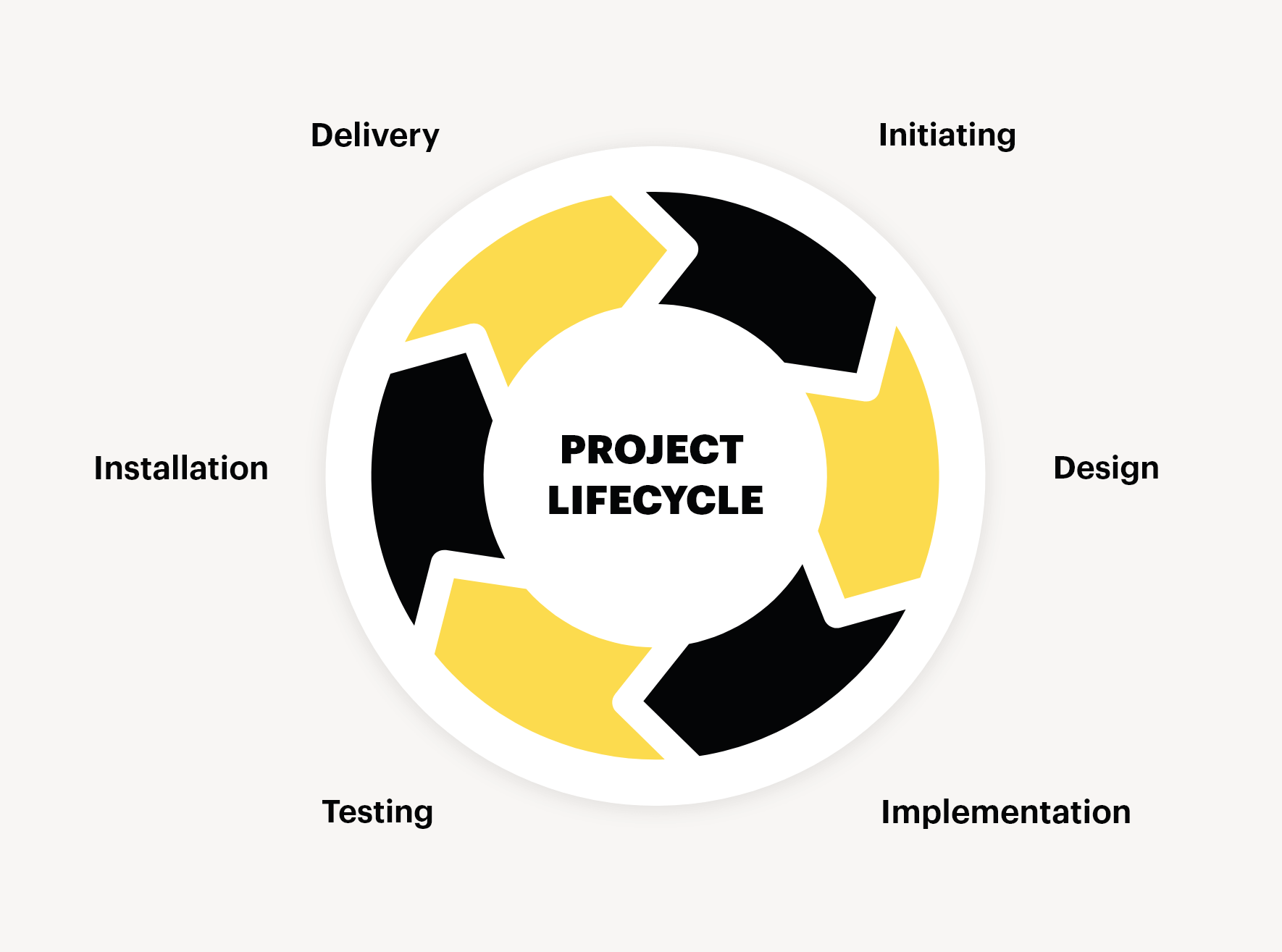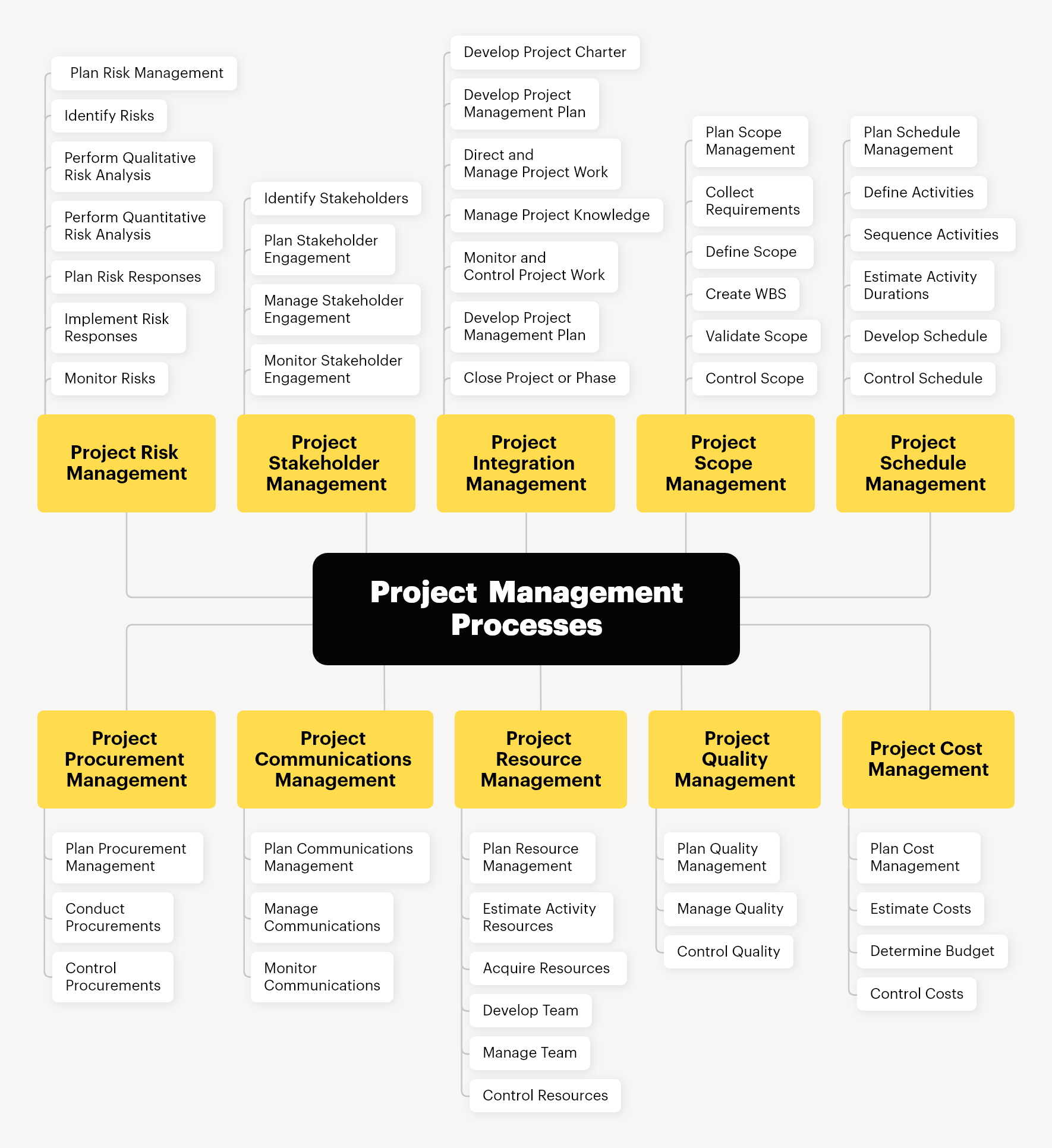Project Management Fundamentals: Everything You Need To Know

Even managers with years of experience still have a lot to learn about project management. It’s a hugely broad topic and it’s constantly evolving, so even at the very beginning of your journey, you will understand it’s a constant one. Still, the key to successful project management, no matter the experience, lies in understanding the basics.
Project management fundamentals are your main building blocks and are crucial to your success.
We understand that not everyone is a certified project manager. In fact, a good percentage of project managers end up at this position by chance and it might feel stressful and overwhelming. Worry not, as soon as you cover the basics, you will quickly gain more confidence. With this in mind, today we will guide you through all project management fundamentals, so you could get started and achieve success with less stress.
1. What are the Project Management Fundamentals?
Project management fundamentals pack all the basic terms, elements, phases, methods, and processes of project management you need to know in order to successfully manage projects.
Here is a list of some of the most common project management fundamentals:
- Project lifecycle – the different phases a project goes through
- Differences between a project, program, and portfolio
- Understanding project management terminology
- Project management phases – Initiation, planning, execution, monitoring, closing
- 10 Project Management Knowledge Areas
- 49 Project Management Processes
2. How to Define a Project?
The project relates to a temporary endeavor, the outcome of which aims at a certain result, product, service, or solution. Projects have constraints, such as budget, time, and resources.
When we work on a project we go through a sequence of tasks with a definite beginning and an end. We define the deliverables and outcomes in the very beginning with their set schedule and deadlines. Not in the last place, we predefine a budget for all the work throughout the project.
3. Project Attributes
We know our project was successful when we refer to the following attributes.
3.1 Planned and organized approach
“Failing to plan, is planning to fail”. In order to have a successful project, we need to act methodically with a plan and a high level of organization. This means to be able to point out what necessary steps and precautions we need to take for completing the project.
3.2 Team commitment
Your project’s success depends also on the ability to align everybody’s vision to what you’re trying to achieve.
Make sure everyone knows what you are building, which is the product they are building for. Share your vision, and keep clarity and transparency throughout the entire lifespan of the project.
3.3 Time management
A project consists of tasks and all tasks relate to each other to reach one common goal- the final product. Just as your final product has a deadline, so should the smaller milestones tasks. Making schedules, updating them, tracking progress, and making adjustments is the extra work required to deliver your project in time and have happy clients.
3.4 Resource optimization
Aside from time management, you will need to plan your other resources as well and allocate if you must. Sometimes, you will need to appoint team members from one project to another that suffers a short staff.
3.5. Result monitoring
Analyze your project data in order to monitor your projects accurately and make the right decisions.
If you need to take corrective measures, regularly monitoring the process will give you the advantage to take them at the right time.
3.6. Maximum customer satisfaction
A successful project will always achieve better customer satisfaction. If you keep the deadlines, if you deliver within budget, if you’ve managed the risks and utilized the resources, your client will be happy and your business will thrive too.

4. Project Lifecycle
Any project has a lifecycle and management process groups. It’s easy to mix these methodologies, however, they are separate and not interchangeable. We’ll start with the lifecycle first.
Before the lifecycle begins, you have the initiating phase. It includes preparing outline documents, making outline proposals, gathering data to present to the client. Once you get your approval for the project scope, budget, and timeline, you kick off the lifecycle itself.
According to the Project Management Institute, most project lifecycles have four or five phases. Of course, these phases might vary depending on the case.
- Detail design – preparing detail design for the product and service, assigning tasks, communicating with stakeholders
- Implementation – starting the actual work on the project
- Testing – to make sure there are no mistakes and “holes” in the product/service; to ensure quality
- Installation – this step can vary from project to project, but basically means finalizing the project and making any corrections if needed; assembling the final product
- Delivery – delivering the final project to the client, closing off and evaluation

5. Project Management Process Groups
Projects are typically broken down into phases, also known as process groups. Each phase outlines the stakeholders involved and what work they need to do. In most cases, you complete each phase by handing off deliverables. In other, you can implement fast-tracking, where phases overlap.
No matter the industry, you will run your project through 5 main process groups
Initiation
During this phase, the decision-making team will identify if the project can realistically be completed, and it will outline ideas. This process consists of developing a project charter and identifying the stakeholders.
A Project Charter often represents a mini-plan in a fairly simple document. Essentially, it aims to answer the question of why are you doing the project. This includes objectives, scope, key milestones, stakeholders, and rough estimates.
Identifying stakeholders includes listing everyone involved. The primary stakeholders in a typical corporation are its investors, employees, customers, and suppliers.
Planning
Planning is much more comprehensive than the initiation phase. Here you prioritize the project, calculate budget, schedule, determine resources. In short, you answer the following questions:
- What are you doing?
- How are you going to do it?
- What defines project completion?
At the end of this process, you will have a comprehensive project plan with project requirements, scope, WBS, schedule, budget, and quality standards.
Execution
During this stage, you assign the tasks to your team members according to the plan from the previous phase.
Monitor and control
While your team works on each task, you monitor and track the process, adjust the schedules, and make sure each milestone is met on time.
Finalization
This phase includes delivering the final product, getting a project evaluation, and learning from the experience.
6. Understanding Project Management Terminology
Now, let’s go briefly through some industry-specific terms that you will often encounter.
- Methodology: Refers to what approach you chose to manage projects efficiently. The most popular approaches for project management are Waterfall and Agile.
- WBS (Work Breakdown Structure): The process of breaking down the client’s requirements into more manageable phases and work packages.
- Milestone: A specific point in time within a project lifecycle that measures the progress of a project toward its ultimate goal.
- Baseline: A fixed reference point that you use to measure and compare your project’s progress against in order to assess the performance of your project over time.
- Gannt Chart: A type of bar chart showing the start and finish dates of several elements of a project. These elements include resources, milestones, durations, tasks, and dependencies.
- CCB (Change Control Board): Whenever anything is beyond the baseline, a change control board needs to inform stakeholders. This way the stakeholders will evaluate if changes are needed; brainstorm how they will affect the whole project, and hold a meeting for presenting these changes.
- Risk Mitigation: Possible future events that may occur and obstruct the successful finalizing of the project. By creating risk logs and planning, these possible events can be avoided.
- Triple Constraint: Budget, scope, schedule. This triple constraint means that if you change one, at least one other will be affected. Indicate the right status and inform stakeholders of issues and address them on time.
7. Project Management Knowledge Areas
PMBOK is a set of standards and guidelines, and the project management knowledge areas are part of these standards: a project manager should have knowledge in certain areas, in order to do their job more efficiently.
Here are the 10 main project management knowledge areas:
- Stakeholder management
- Cost management
- Quality management
- Resource management
- Procurement management
- Integration management
- Scope management
- Communication management
- Schedule management
- Risk management
These areas are all about insight rather than action: knowing how to manage costs, make schedules, calculate risks, allocate resources, ensure quality, etc.
8. Project Management Processes
Apart from the 10 knowledge areas, there are 49 project management processes. For each knowledge area, there are a number of processes. You can see which they are in the illustration below:
1. Project Stakeholder Management
Identify Stakeholders | Plan Stakeholder Engagement | Manage Stakeholder Engagement | Monitor Stakeholder Engagement
2. Project Integration Management
Develop Project Charter | Develop Project Management Plan | Direct and Manage Project Work | Manage Project Knowledge | Monitor and Control Project Work | Perform Integrated Change Control | Close Project or Phase
3. Project Scope Management
Plan Scope Management | Collect Requirements | Define Scope | Create WBS | Validate Scope | Control Scope
4. Project Schedule Management
Plan Schedule Management | Define Activities | Sequence Activities | Estimate Activity Durations | Develop Schedule | Control Schedule
5. Project Cost Management
Plan Cost Management | Estimate Costs | Determine Budget | Control Costs
6. Project Quality Management
Plan Quality Management | Manage Quality | Control Quality
7. Project Resource Management
Plan Resource Management | Estimate Activity Resources | Acquire Resources | Develop Team | Manage Team | Control Resources
8. Project Communications Management
Plan Communications Management | Manage Communications | Monitor Communications
9. Project Procurement Management
Plan Procurement Management | Conduct Procurements | Control Procurements
10. Project Risk Management
Plan Risk Management | Identify Risks | Perform Qualitative Risk Analysis | Perform Quantitative Risk Analysis | Plan Risk Responses | Implement Risk Responses | Monitor Risks
9. Project Management Standards
Part of the project management fundamentals is the project standards. The following three project management standards have been accepted worldwide:
- Project Management Body of Knowledge (PMBOK), Project Management Institute (PMI),
- Projects IN Controlled Environments (PRINCE2), a standard which, like ITIL, was developed by the Office of Government Commerce (OGC)
- the IPMA Competence Baseline (ICB) of the International Project Management Association (IPMA)
These are the official standards that you can use as a starting point when building ones for your specific business. The official standards are suitable for large-scale projects, where things are more complicated and much more resources are at stake.
Final words
Through proper project management, you can maintain the vision and goals of the project, while supporting the client’s objectives. With project management, you avoid risks and learn to effectively and efficiently use your available resources. It helps you understand your team, the needs of your clients, and complete projects on time and within budget.
That’s why learning about the project management fundamentals and how the different elements relate to each other can help you get better as a project manager and achieve your business goals.
If you liked this article, you might also want to check out:
- What are Project Management Best Practices and How To Implement Them Right Now
- What Does a Project Manager Do and How to Do it Too
